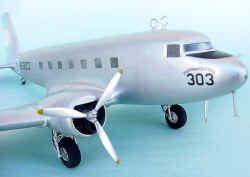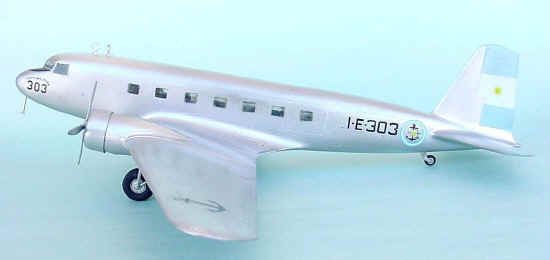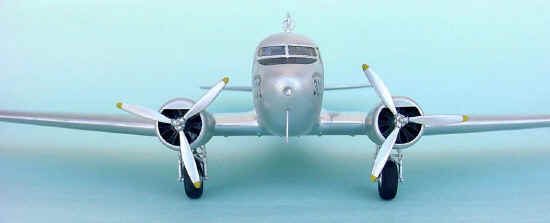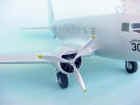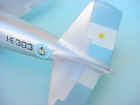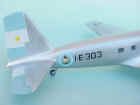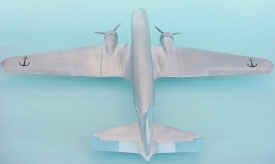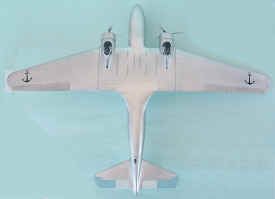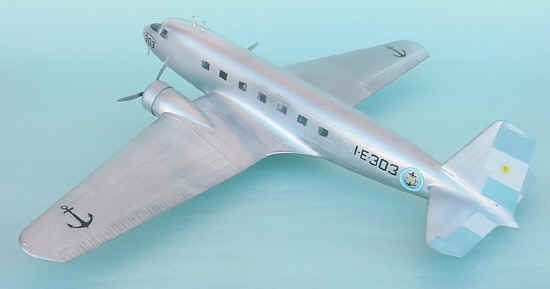 |
||||||
|
Airplanes |
||||||
|
Argentine Douglas DC-2 from MPM, 1/72 scale |
||||||
|
by Fabian Vera |
||||||
|
Predecessor of the famous DC-3, this transportation plane formed part of many airlines and armed forces in the world but without much success. The introduction soon afterwards of the DC-3 and C-47 and their recognized success cast a shadow on this plane, whose performance was almost unnoticed. In Argentina, this plane was used by the "Marina de Guerra" as a transportation plane. It took part in the "Comando de Transportes Aeronavales" from 1946 through 1958 and was in service at the "Escuela de Aviación Naval" from 1953 to 1955. Five of these DC-2 planes were purchased from Venezeula in a very bad condition and brought in flight to the country. Since their original engines (Wright Cyclone R-1820-G2) were in very bad shape, they were replaced with the ones from the Martin 319 "WAN". Some of these planes flew with wings corresponding to the DC-3 units, and were known as DC 2 ½. The end of the operational life of these units in the Argentine Navy took place in 1958, and four of them were sold as surplus in 1959.
The kit As far as I know, the DC-2 kit from MPM is the only one available at the market. MPM markets two versions, a military on ( MPM's Douglas DC-2 kit #72091 1/72 scale ) and a civil one ( DC-2 C.L.S. / Lufthansa -1/72 MPM #72505 ). Moulded with fine recessed panels, this is a very simple kit having few parts and without too much flash, although it lacks inserts, like most of the kits manufactured by this company. Generally speaking, this is a good quality model and brings an excellent decal set with versions belonging to the Czech Airline Company (2 versions) and one belonging to Lufthansa.
Assembly and Detailing The weakest part of this kit is the assembly, since the fit of all parts requires a good deal of filling and sanding. For this particular version I used the tail recommended on the instruction sheet, parts #8 and #9, while I replaced the nose with the one having only one landing taxi light instead of part #26, combining it with the transparent part # 44.
A part that needs special attention is the rear undercarriage. It does not have a firm fit area, it just indicates the area where it should be located with a raised panel line. For which reason it is necessary to use a piece of a hypodermic needle, which is also recommended for its small wheel.
Bibliography and other sources of information "Historia de la Aviación Naval Argentina" Compiled by Contralmirante Contador (R) D. Pablo E. Arguindeguy
|
||||||
